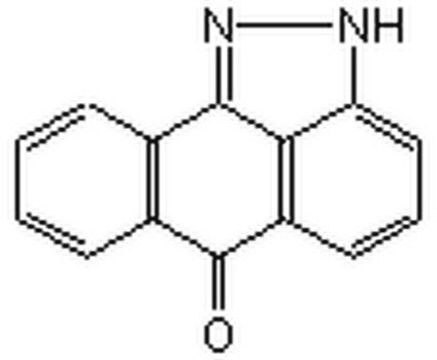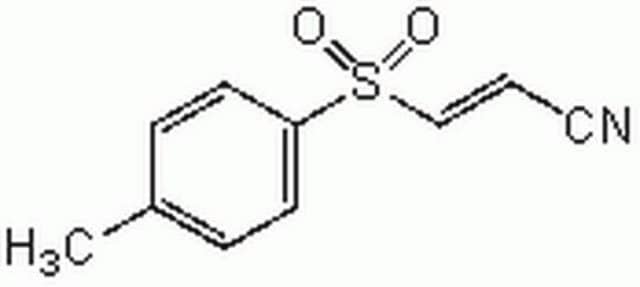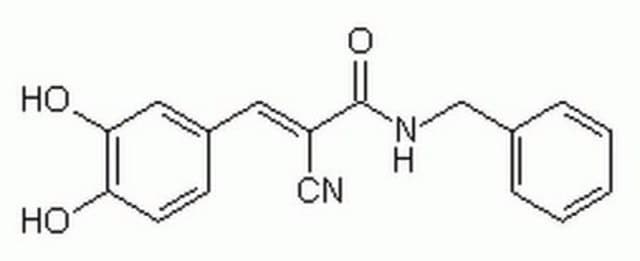513000
PD 98059
≥98% (HPLC), solid, MEK inhibitor, Calbiochem®
Synonyme(s) :
PD 98059, 2ʹ-Amino-3ʹ-methoxyflavone, MEK Inhibitor V
About This Item
Produits recommandés
product name
PD 98059, PD 98059, CAS 167869-21-8, is a cell-permeable, selective & reversible inhibitor of MAP Kinase Kinase (MEK). Inhibits MAP Kinase activation and subsequent phosphorylation of MAP Kinase substrates.
Niveau de qualité
Pureté
≥98% (HPLC)
Forme
solid
Fabricant/nom de marque
Calbiochem®
Conditions de stockage
OK to freeze
protect from light
Couleur
pale yellow
Solubilité
methanol: 0.7 mg/mL
DMSO: 20 mg/mL
Conditions d'expédition
ambient
Température de stockage
−20°C
InChI
1S/C16H13NO3/c1-19-14-8-4-6-11(16(14)17)15-9-12(18)10-5-2-3-7-13(10)20-15/h2-9H,17H2,1H3
Clé InChI
QFWCYNPOPKQOKV-UHFFFAOYSA-N
Description générale
Actions biochimiques/physiologiques
MAP kinase kinase (MEK)
Avertissement
Reconstitution
Autres remarques
Kültz, D., et al. 1998. J. Biol. Chem. 273, 13645.
Dudley, D.T., et al. 1995. Proc. Natl. Acad. Sci. USA92, 7686.
Langlois, W.J., et al. 1995. J. Biol. Chem. 270, 25320.
Pang, L., et al. 1995. J. Biol. Chem.270, 13585.
Waters, S.B., et al. 1995. J. Biol. Chem.270, 20883.
Informations légales
Code de la classe de stockage
11 - Combustible Solids
Classe de danger pour l'eau (WGK)
WGK 3
Certificats d'analyse (COA)
Recherchez un Certificats d'analyse (COA) en saisissant le numéro de lot du produit. Les numéros de lot figurent sur l'étiquette du produit après les mots "Lot" ou "Batch".
Déjà en possession de ce produit ?
Retrouvez la documentation relative aux produits que vous avez récemment achetés dans la Bibliothèque de documents.
Les clients ont également consulté
Notre équipe de scientifiques dispose d'une expérience dans tous les secteurs de la recherche, notamment en sciences de la vie, science des matériaux, synthèse chimique, chromatographie, analyse et dans de nombreux autres domaines..
Contacter notre Service technique
















